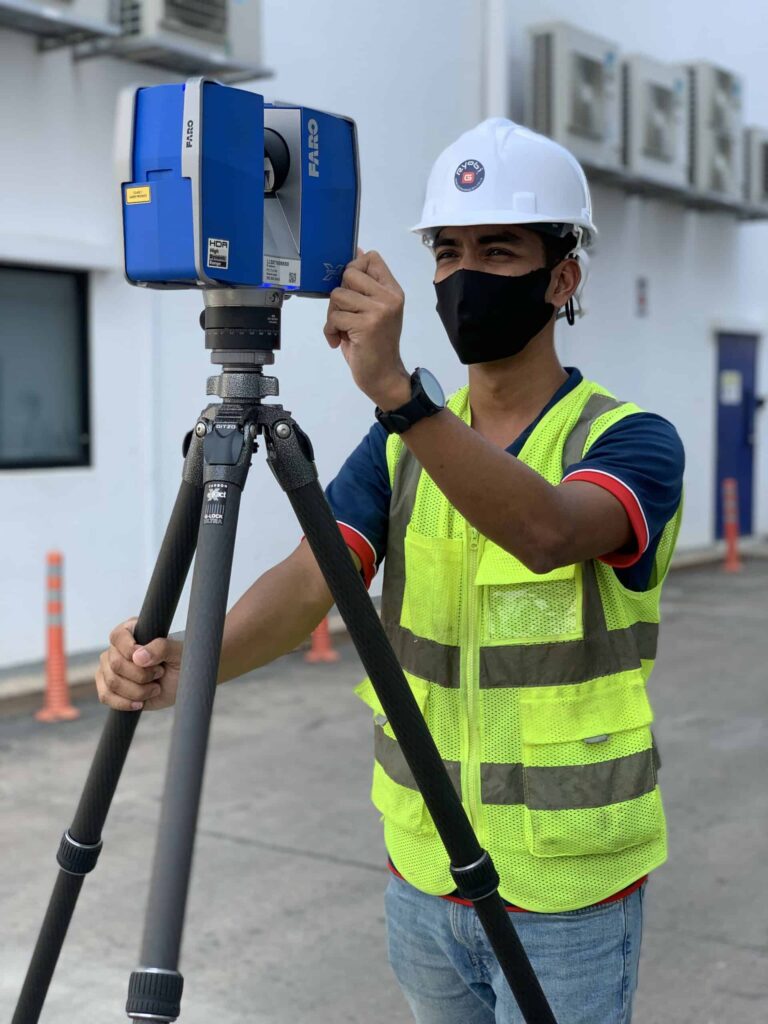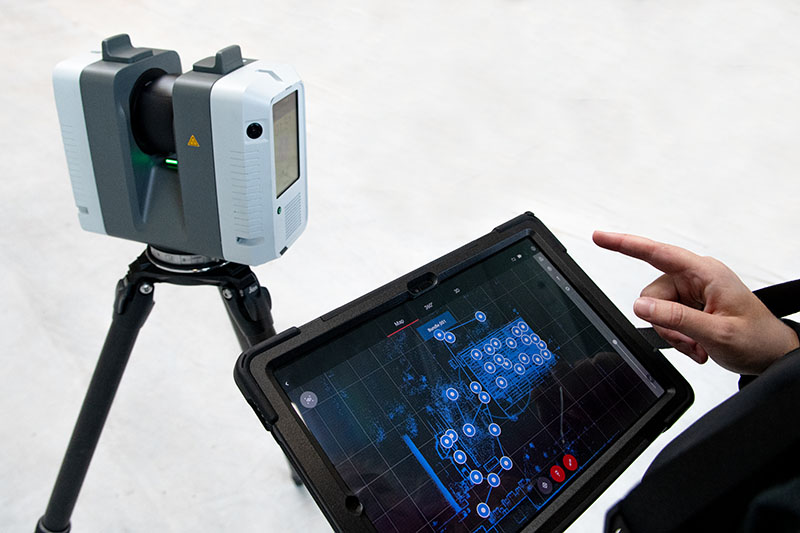Exploring the Applications of 3D Laser Scanning in Archaeology and Cultural Heritage Preservation
The integration of 3D laser scanning technology in archaeology and cultural heritage conservation notes a considerable improvement in just how historic sites and artifacts are documented and evaluated. This non-invasive technique gives accurate spatial data, exposing elaborate details that were previously hard to record. As the applications of this modern technology remain to progress, different ramifications for conservation, documentation, and education emerge, inviting more expedition into its transformative influence on the area.
Comprehending 3D Laser Scanning Technology
3D laser scanning modern technology has transformed the field of archaeology by giving thorough and specific spatial data. This innovative innovation employs laser light beams to catch millions of information points from a things or site, developing a very precise three-dimensional depiction (3D Scanning). The resulting point clouds can disclose elaborate information of archaeological sites, frameworks, and artifacts that could be unnoticeable to the nude eye
Utilizing this modern technology, excavators can document the precise measurements, shapes, and placements of objects with unmatched precision. This method lessens the risk of human error and removes the need for considerable hand-operated measurements. Moreover, the information collected can be examined and shared conveniently, helping with partnership amongst scientists. By integrating 3D laser scanning with GIS and other digital devices, archaeologists improve their capacity to visualize and translate historical contexts, bring about much deeper insights into ancient cultures and atmospheres.
Enhancing Historical Documents
3D laser scanning greatly enhances archaeological paperwork with its capability to develop exact site maps. This technology promotes comprehensive artifact analysis, providing understandings that traditional methods may ignore. On top of that, it ensures the conservation of contextual data, which is necessary for recognizing the partnerships within historical sites.
Precise Website Mapping
While typical mapping approaches usually deal with recording the detailed information of historical sites, progressed laser scanning innovation provides an innovative method to accurate site mapping. This method enables excavators to produce extremely detailed and precise three-dimensional representations of sites, showcasing topographical variations and architectural functions with amazing integrity. The capability to capture numerous information factors in a matter of minutes enables extensive paperwork, which can be quickly updated and shared among researchers. In addition, laser scanning facilitates the dimension of complicated geometries that would be difficult to examine utilizing conventional devices. Therefore, this technology enhances the accuracy of site maps, contributing substantially to the preservation and understanding of cultural heritage sources.
Detailed Artifact Evaluation
Laser scanning technology greatly boosts the analysis of historical artifacts, providing scientists with extraordinary information and precision. This approach records detailed surface appearances, dimensions, and features that conventional paperwork techniques might ignore. By creating high-resolution 3D versions, scholars can closely check out artefacts without the danger of damage inherent in physical handling. This precision enables much better comparative researches, enabling professionals to recognize manufacturing strategies, stylistic variations, and potential cultural value. Furthermore, the capacity to manipulate and imagine information in 3 measurements facilitates a deeper understanding of artifact capability and use. Generally, laser scanning cultivates an extra extensive technique to historical documents, making certain that important information regarding artefacts is maintained for future study and education.
Conservation of Contextual Data
Protecting contextual information is vital for boosting historical documents, as it guarantees that searchings for are understood within their initial ecological and social structures. 3D laser scanning innovation considerably adds to this preservation effort by capturing in-depth spatial connections among artifacts, structures, and their environments. By creating specific 3D designs, archaeologists can document the specific places and alignments of things sitting, promoting a detailed understanding of their context. This modern technology enables researchers to revisit and evaluate websites long after excavation, keeping the stability of contextual information. Additionally, electronic documents developed with scanning can be shared worldwide, fostering joint research study and public engagement. Inevitably, protecting contextual data via 3D laser scanning improves historical narratives and advertises a much more extensive recognition of cultural heritage.
Conservation of Cultural Heritage Sites
As advancements in technology remain to evolve, the conservation of cultural heritage websites has actually become significantly reliant on cutting-edge techniques such as 3D laser scanning. This modern technology permits the thorough paperwork of landscapes, artefacts, and structures, recording their accurate measurements and spatial relationships in a non-invasive way. By creating high-resolution 3D designs, scientists can check and evaluate deterioration patterns, allowing positive preservation strategies.
Furthermore, 3D laser scanning assists in the sharing of thorough site data with the international area, promoting collaboration among conservationists, archaeologists, and historians. These models act as very useful sources for education and learning and public engagement, raising awareness of cultural heritage problems. Additionally, the electronic documents produced can secure versus loss because of environmental elements, vandalism, or overlook. On the whole, 3D laser scanning stands for a transformative technique to the preservation of cultural heritage, making certain that these websites can be examined and appreciated by future generations.

Restoration and Repair Efforts
The thorough documentation attained through 3D laser scanning plays a considerable role in reconstruction and reconstruction initiatives within archaeology. This technology offers specific measurements and high-resolution imagery, enabling exact digital designs of artefacts and frameworks. These versions function as vital referrals throughout remediation processes, making it possible for excavators to imagine the original layout and make notified choices about materials and methods needed for repair work.
Additionally, 3D laser scanning promotes the repair of harmed or lost aspects by developing in-depth reproductions. This process help in ensuring that restorations preserve historical stability while also enabling for ingenious methods to bring back sites. The ability to evaluate wear patterns and structural weaknesses via scanned information boosts understanding of a website's historic context and its usage with time. Subsequently, 3D laser scanning not just protects the physical elements of social heritage yet likewise enhances the narrative of background, leading future reconstruction endeavors.
Educational and Study Opportunities
The assimilation of 3D laser find scanning in archaeology opens up significant academic and research possibilities. Academic partnerships can enhance the understanding of old websites, while specialized training workshops gear up professionals with vital skills for using this innovation. Together, these campaigns promote a richer engagement with historical methods and approaches.
Academic Collaborations in Archaeology
Joint efforts in archaeology have actually ended up being increasingly necessary for progressing both academic and research possibilities. By fostering collaborations among colleges, research organizations, and cultural heritage organizations, these cooperations help with the exchange of expertise and resources, boosting the quality of archaeological studies. Joint tasks frequently take advantage of diverse experience, allowing for cutting-edge approaches and comprehensive evaluations, particularly in the application of innovations like 3D laser scanning. Such collaborations likewise advertise interdisciplinary approaches, engaging areas such as background, conservation, and location science. Additionally, academic partnerships usually lead to the advancement of new curricula and training programs, preparing the next generation of excavators to effectively utilize sophisticated innovations in their job. Ultimately, these alliances add to the preservation and understanding of cultural heritage.
Educating Workshops for Specialists
Training workshops for professionals in archaeology are increasingly essential for improving skills in the application of advanced modern technologies such as 3D laser scanning. These workshops give individuals with hands-on experience in using innovative devices and software application, fostering a deeper understanding of information capture and analysis processes. Specialists can discover to create accurate electronic designs of archaeological websites, which substantially help in documentation and conservation initiatives. Furthermore, these training sessions often consist of discussions on ideal methods and study, advertising understanding exchange amongst individuals. By purchasing continual education, specialists can stay upgraded on progressing innovations, ultimately boosting the efficiency of their research and cultural heritage conservation efforts. This commitment to ability enhancement is important for progressing the field of archaeology.
Future Fads in 3D Laser Scanning for Archaeology
As developments in modern technology remain to reshape different areas, the future of 3D laser scanning in archaeology guarantees to boost both the precision and efficiency of site documents and analysis. Arising trends moved here suggest an expanding integration of man-made intelligence and artificial intelligence, helping with automated data handling and analysis. This evolution will certainly enable excavators to evaluate complex datasets extra quickly, leading to faster insights right into historical contexts.
Additionally, the combination of drone modern technology with 3D laser scanning is likely to broaden, allowing thorough aerial studies of historical sites that are challenging to accessibility. The increasing cost of scanning equipment will certainly equalize access, empowering smaller establishments and independent researchers to utilize these devices successfully. Furthermore, improvements in online truth and enhanced reality will enable immersive experiences for public engagement and education and learning, making historical searchings for a lot more interactive and accessible. These trends jointly signify a transformative future for archaeology, improving preservation efforts and increasing the technique's outreach.
Often Asked Inquiries
Just How Much Does 3D Laser Scanning Devices Expense?

What Are the Limitations of 3D Laser Scanning?
The limitations of 3D laser scanning include high expenses, potential data handling obstacles, level of sensitivity to environmental conditions, and difficulty capturing elaborate details in complicated surface areas, which can influence the precision and efficiency of scanned representations. (3D Scanning)

Can 3D Laser Scanning Be Utilized Underwater?
Yes, 3D laser scanning can be used undersea, however it requires customized devices and techniques to get rid of challenges such as water distortion and limited visibility. Successful applications have actually been demonstrated in aquatic archaeology and underwater surveys.
How Long Does a Scanning Job Typically Take?
A scanning project typically takes anywhere from a couple of days to numerous weeks, depending on the complexity and size of the area being scanned, along with the preparation and post-processing requirements entailed in the project.
Are There Specific Software Requirements for Processing 3D Checks?
Yes, particular software requirements for refining 3D scans consist of programs with the ability of taking care of large point clouds, such as Autodesk Wrap-up, Cyclone, or MeshLab. These tools assist in evaluation, visualization, and assimilation into numerous applications efficiently.
The combination of 3D laser scanning modern technology in archaeology and cultural heritage preservation notes a significant innovation in exactly how historic websites and artifacts are documented and examined. 3D laser scanning technology has revolutionized the area of archaeology by giving exact and detailed spatial data. As advancements in innovation proceed to advance, the preservation of cultural heritage sites has ended up being progressively reliant on innovative techniques such as 3D laser scanning. As innovations in modern technology proceed to reshape various fields, the future of 3D laser scanning in archaeology guarantees to improve both the you can try this out precision and effectiveness of website documents and evaluation. The assimilation of drone technology with 3D laser scanning is likely to expand, enabling comprehensive aerial surveys of historical sites that are tough to accessibility.